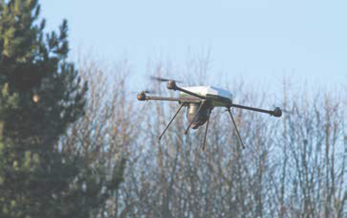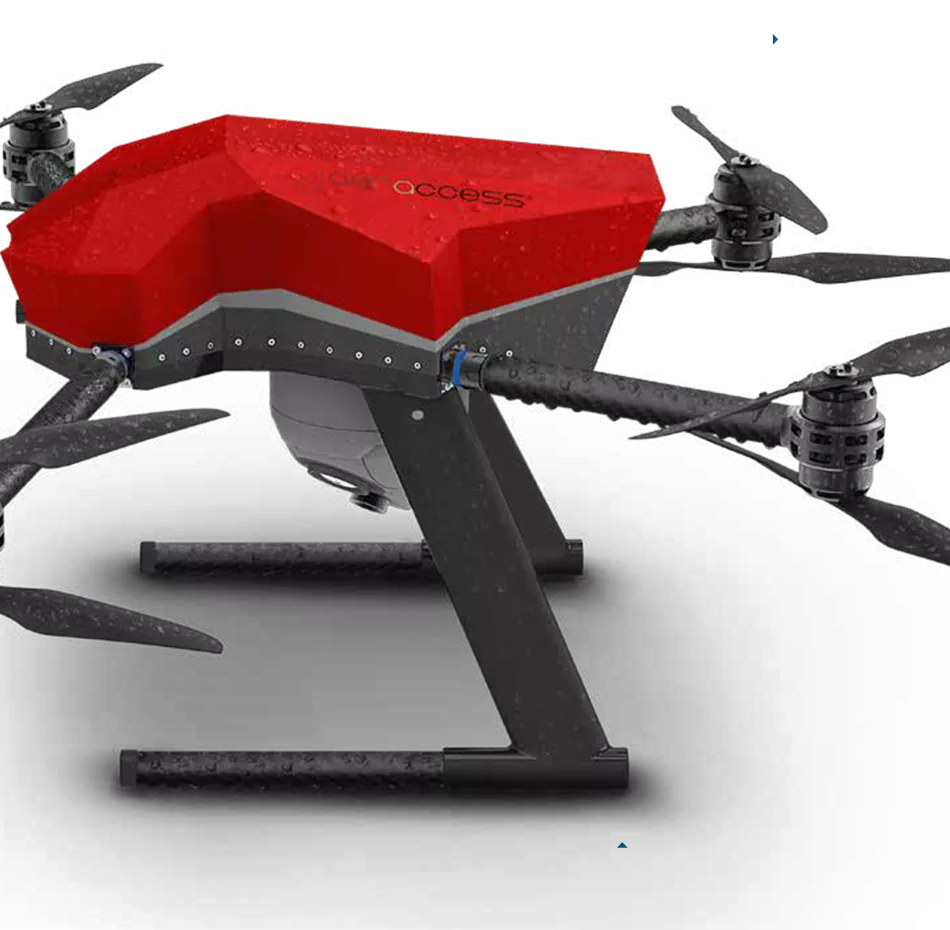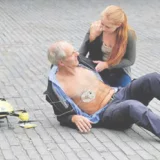Drones in our skies, but not in our everyday lives

Somewhere between military drones and recreational drones, commercial drones – for professional applications – is an emerging market with enormous potential.
Aeraccess is one of the few French manufacturers in this field. Interview with CEO Shehzaad Callachand, 32, an aerospace engineer.
Miniature or giant, autonomous or radio-con- trolled, military, commercial or recreational: what does the term “drone” cover?
Shehzaad Callachand: the word has become commonplace in recent years and it designates more or less anything that flies without a pilot! Today, there is a drive to make a distinction between the different types. For example, in Europe, they would like to restrict the use of the term “drone” to military applications only. For consumer applications, they prefer RPAS (Re- motely Piloted Aircraft Systems). In the USA, they also talk about UAVs (Unmanned Aerial Vehicles) or UAS (Unmanned Aerial Systems)…
The topic of drones keeps cropping up in the media. Why such a take-off?
Miniature drones have existed for about a decade already and have been flying around research laboratories. So “small non-military drones” are nothing new. The boom began when drones started to be used as toys. They were boosted by model aircraft fans. Miniaturi- zation, improving quality and decreasing prices of technologies such as GPS, gyroscopes, sen- sors and processors, as well as open source software have then sped up progress. They have become much more than simple toys…
Their excellent performance has opened the way to a wide range of more serious, profes- sional applications, such as photography and surveillance.
This is how “commercial drones” were born. They bring solutions that could only be pro- vided by helicopters and military drones until now. The costs are much lower too!
Does that mean that the development of drones has come from below?
Exactly: commercial drones are upscaled recreational drones and not downscaled mili- tary drones! It’s easy to see that “consumer drones” are closer to the world of “geeks” than that of aeronautics.
It sounds rather scary as far as reliability and safety are concerned!
Yes, it is certainly a major concern! Today in France 90% of drones are designed and as- sembled by people with no background in aeronautics, who lack sensitivity, knowledge and comprehension of maintenance require- ments, etc. Unlike aircraft or cars, drones were not subjected to years of R&D, tests, certifica- tion, or first limited to high-range models prior to general release. There is the same concern about training: whilst extensive training is re- quired for professional aircraft pilots or drivers, piloting commercial drones requires none.
And yet, they fly …
Absolutely! In France, in 2013, a year after the in- troduction of regulations on commercial drones, there were already 1,000 operators. In China, there are an estimated 10,000. In the USA, alleg- edly 5,000 active commercial drones, although their use is officially forbidden! Some exceptions are made for instance for Hollywood shooting.
Is it all about to change?
Yes, for sure. The sector is very young, it has begun to structure itself. Europe has been working on harmonizing the rules. The U.S. Federal Aviation Administration has recently announced a Notice of Proposed Rulemaking for small UAS, but it will probably take 12-18 months to turn them into laws. This is an in- ternational movement: countries cooperate on solid regulations. Commercial drones will be integrated into civil aviation legislation. It will be rather complex and it will certainly take time, but the sector will then grow on a firm basis.
Simultaneously, commercial drones are becoming more professional…
For commercial applications – implying for in- stance flying over residential areas – we cannot accept technologies from the world of “geeks”. We need more in terms of reliability, safety and performance. So we go for drones equipped with industrial technology and professional servicing. Such as those that Aeraccess and Aerialtronics manufacture, to give a couple of European examples.
The market is still young, how is it structured?
Three sectors – military, recreational and com- mercial – are still rather distinct, but it is al- ready changing. Some military players, such as Aeryon, Cassidian or Novadem have started showing interest in the civilian market.
Parrot, a major recreational drone provider, has just invested in a company specializing in ag- ricultural sensors and another one developing long-haul drones.
Governments and armies have started using civilian drones for some applications. Obvi- ously, the boundaries are becoming increas- ingly blurred.
Apart from legislation, what prevents commercial drones from establishing themselves on a major scale?
What they are most lacking at this point in time is a “detect and avoid” technology. If we want to make thousands of drones coexist, they need to be able to avoid each other, birds, electric lines or any other obstacle. This requires highly efficient sensors that are not yet available, but soon technology will make drones extremely reliable. They will be used efficiently – at re- duced cost – in a wide variety of surveillance, reconnaissance and broadcasting applications.
How about our everyday lives ?
As disappointing as it may sound, I do not see drones enter our daily lives yet. Delivering parcels, for instance, like Amazon and Google would like to. They are not ready for it. You see, autonomous cars have been developed for years, using proven technologies. However, they are still not on the road. With drones, eve- rything is new. We probably still need another decade before technology is proven enough and commercial applications can be used by the general public. Also, our society needs to accept drones in our daily lives.
AERACCESS LAUNCHES THE FIRST ALL-WEATHER DRONE
Drones, even more than helicopters, are weather-dependent, which represents a major constraint for certain military, para- military or police interventions and some search and rescue operations with these devices. Aeraccess has invented the first “all-weather” drone.
Q800XE is the only IP67 rated professional drone. Perfectly watertight, it can fly in heavy rain, in a blizzard and 70-80km/h winds. Its turret, also designed by Aeraccess, is naturally also watertight. Only three or four manufacturers in the world are able to provide them.
In order to protect the drone and all its elements (including the removable parts), Aeraccess had to be doubly ingenious. They had to reduce weight, redesign architecture. The antennas are for instance hidden in the fibreglass landing legs.
The startup company has also developed an innovative method of fitting the arms. Thanks to a LEMO custom-designed solu- tion, they can be plugged in within a few seconds. It is ideally designed to be able to equip a drone with more powerful mo- tors and carry a bigger payload. Aeraccess has patented this global innovation.
The startup is one of the few French manufacturers of profes- sional commercial drones. It’s characterized by the modular design of its turrets, which makes it possible for the clients to use the same drone in a wide variety of applications. Fur- thermore, Aeraccess uses only specifically adapted high-end industrial technologies.
The Q800XE is the third model designed by the startup. The Hawker Q800X another multi-motor, ultraportable drone, which is easy to assemble and ideal for surveillance of a targeted zone (industrial plant, a building on fire…). The Goshawk W200 is a fixed-wing drone, capable of flying at an altitude of up to 1000m and with a longer range. It has been designed for surveillance missions and reconnaissance of larger areas.
Launched 4 months ago, after two years’ developing their first models, Aeraccess have just delivered their first drones in England.




